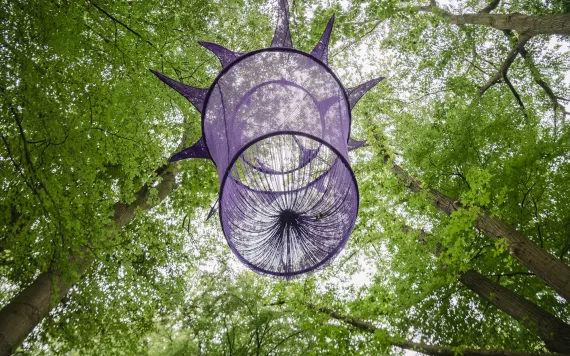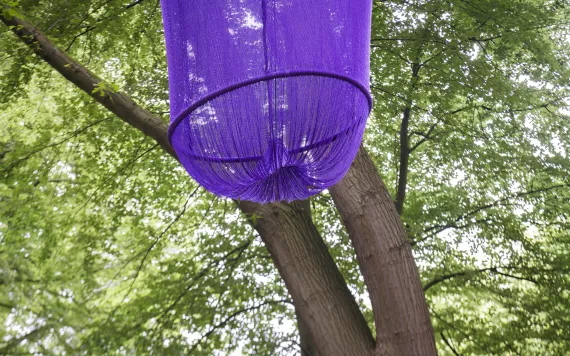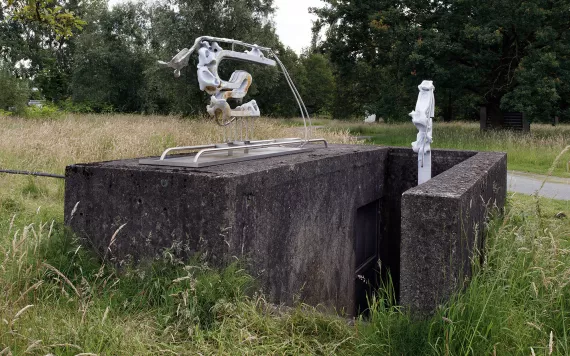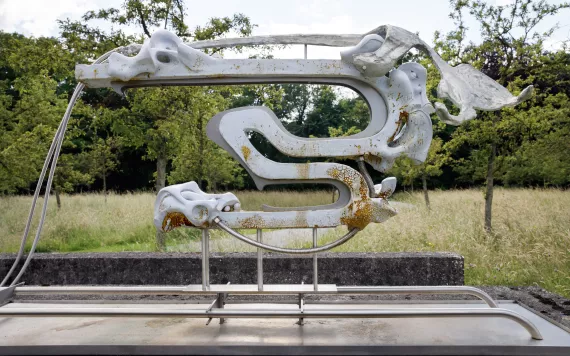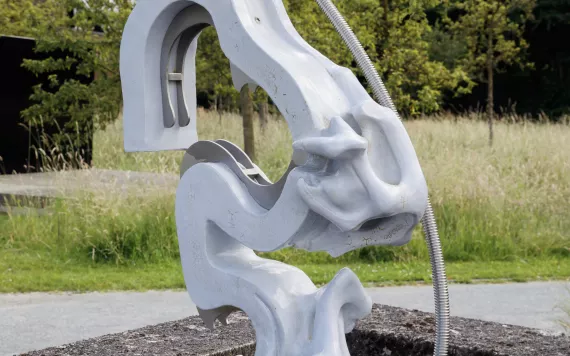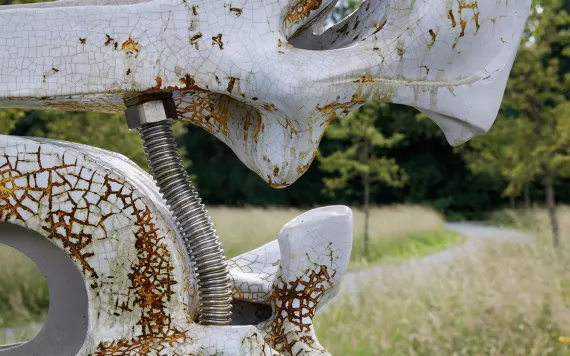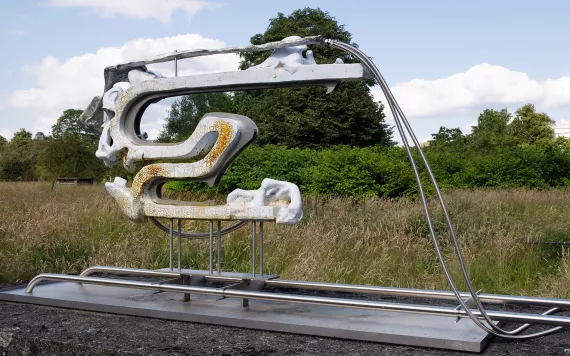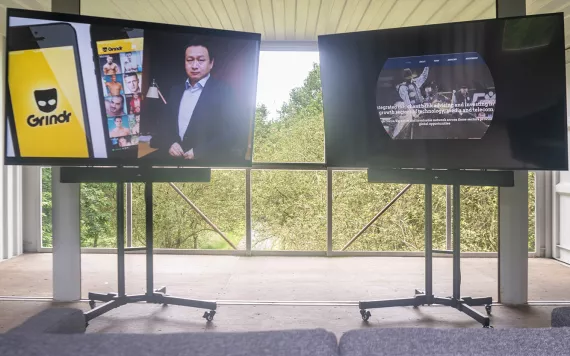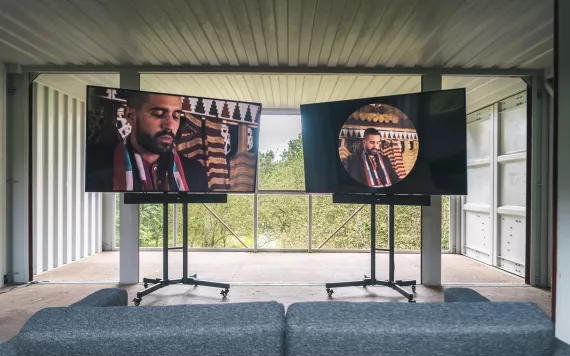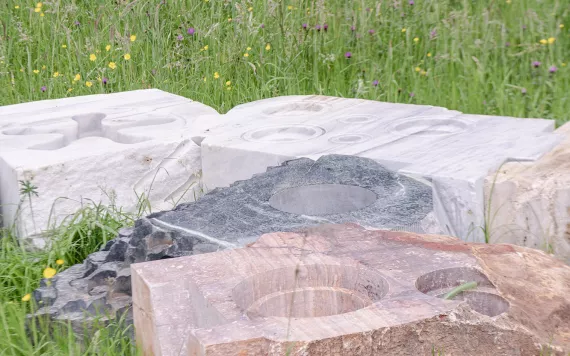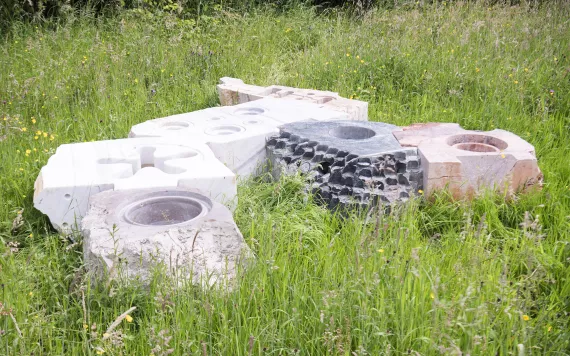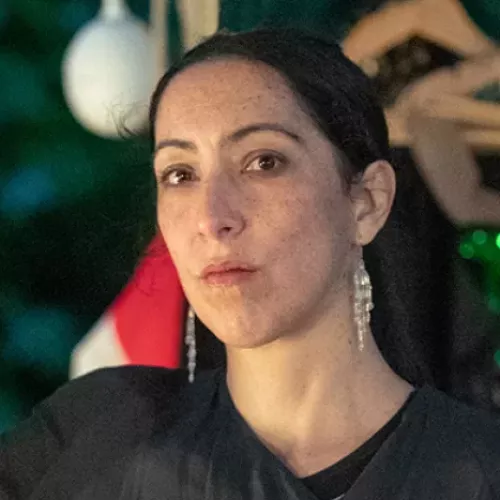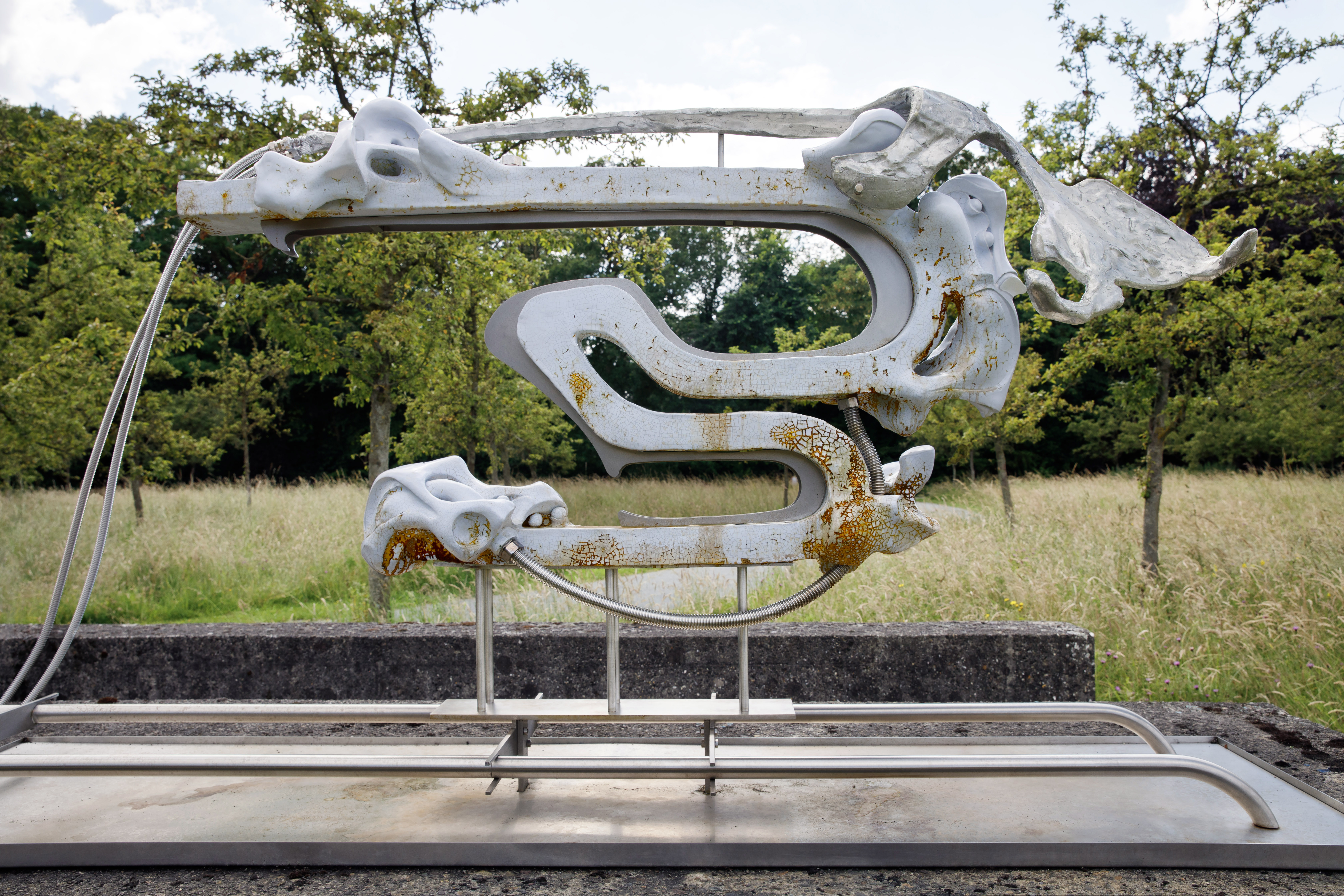
Artist Talk #2 - the works
Which artworks will be discussed in Artist Talk #2?
How alive can non-human forms be? What is their agency, and how are we as humans connected to these beings? In this second COME CLOSER Artist Talk, moderator Zeynep Kubat engages in a conversation with Isabelle Andriessen, Amanda Piña and Andrés Jaque. Here's an overview of the works they created for the exhibition.
Amanda Piña
To Bloom () Florecimiento (2024)
Amanda Piña presents a sculpture made in the ancient tradition of Mayan hammock weaving, alive today in the Yucatan peninsula. The structure made of Rottan canes re-significates the relation that material has with the disciplination of the enslaved bodies during the slave trade. The hammock weaving textile, manufactured collectively, reminds us of indigenous forms of resistance to projected temporalities, to rest and to contemplate.
The installation was activated on 6 and 7 July 2024.
Isabelle Andriessen
Ghouls (2024)
The ghouls emerge at the emergency exits and ventilation grilles of the Craeybeckx tunnel. They exude something dark underground, with a hint of fear, death, crypts, and violence. Yet, these sculptures also lure you closer. The strange figures have something enticing about them.
Like a slow performance, they change very subtly: they leak, sweat, and change color. Their eerie appearance brings to mind machinery, infrastructure, and relics. Are they a harbinger of a dystopian landscape, a toxic wasteland from which humanity has disappeared? Or do they suggest development and growth, an endless urge for life? What turns something lifeless into something alive? And is there really such a clear boundary between living and lifeless?
Andrés Jaque
Intimate Strangers (2016)
The multimedia installation Intimate Strangers is the result of two years of field research at the head office of the online dating-app Grindr in West Hollywood.
Grindr was the first social media app which, using live GPS-data tracking, put homosexual men in touch. More than one million users are active at any one time. The app is seen as a safe space for LGBT emancipation, where users gain access to homosexual encounters. Also in countries where homosexuality is illegal.
As such, Grindr has helped to normalise homosexuality and has created an online community. Here, you can be an online character that does or doesn’t match who you really are.
As in all communities there are complex dynamics of inclusion and exclusion here too. Most profiles are carefully constructed and match a stereotype of a virile muscly cisgender homosexual man. Yet the app is not without risk: intolerant governments can also use the app to track down and arrest homosexual men.
Transspecies Kitchen (2022)
We eat, digest and decompose. These processes are not only essential for living organisms. You also find them in the geological evolutions of our planet. Biology and geography are related. How do we restore that connection?
Transspecies Kitchen (2022) is a kitchen made of stone containing information about the earth’s natural formation. Food preparation initiates similar processes, scaled to our human body. The energy is gathered from fermentation: the natural process in which micro-organisms transform plants and vegetables, just like our digestive process.
In our own body, these processes have a big impact on how we feel. They determine our taste, smell, sleepiness and euphoria, or cause physical discomfort. In the kitchen, the artist connects the inside of our human body with the environment.
In a one-off activation of the kitchen, the artist invites you to come and taste what is being prepared in the kitchen. Feel how cooking and eating brings people together. With each other and with the environment.
